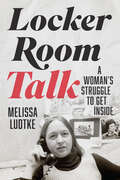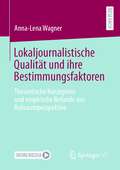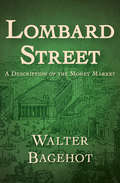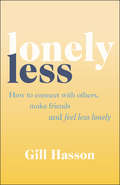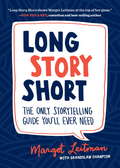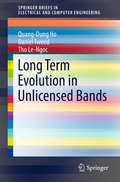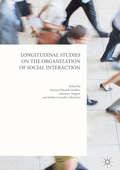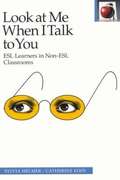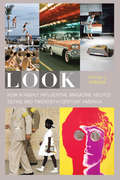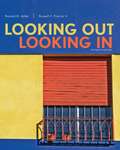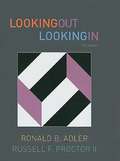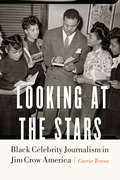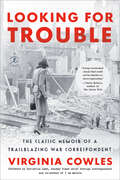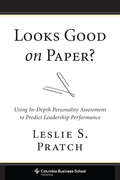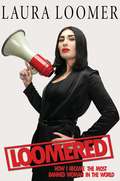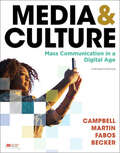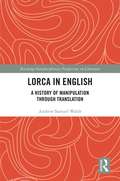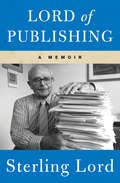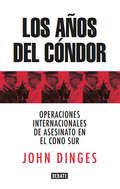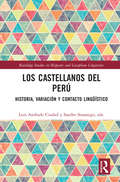- Table View
- List View
Locker Room Talk: A Woman’s Struggle to Get Inside
by Melissa LudtkeWhile sportswriters rushed into Major League Baseball locker rooms to talk with players, MLB Commissioner Bowie Kuhn barred the lone woman from entering along with them. That reporter, 26-year-old Sports Illustrated reporter Melissa Ludtke, charged Kuhn with gender discrimination, and after the lawyers argued Ludtke v. Kuhn in federal court, she won. Her 1978 groundbreaking case affirmed her equal rights, and the judge’s order opened the doors for several generations of women to be hired in sports media. Locker Room Talk is Ludtke’s gripping account of being at the core of this globally covered case that churned up ugly prejudices about the place of women in sports. Kuhn claimed that allowing women into locker rooms would violate his players’ “sexual privacy.” Late-night television comedy sketches mocked her, as newspaper cartoonists portrayed her as a sexy, buxom looker who wanted to ogle the naked athletes’ bodies. She weaves these public perspectives throughout her vivid depiction of the court drama overseen by Judge Constance Baker Motley, the first Black woman to serve on the federal bench. She recounts how her lawyer, F.A.O. “Fritz” Schwarz, employed an ingenious legal strategy that persuaded Judge Motley to invoke the Fourteenth Amendment’s Equal Protection Clause in giving Ludtke access identical to that of her male counterparts. Locker Room Talk is both an inspiring story of one woman’s determination to do a job dominated by men and an illuminating portrait of a defining moment for women’s rights.
Logging Off: The Human Cost of Our Digital World
by Adele Zeynep Walton'You won't look at your screens in the same way after reading this book' Grace Blakeley, author of VULTURE CAPITALISM 'Logging Off is a life-saving book' Mikaela Loach, author of IT'S NOT THAT RADICAL'A harrowing but important read' Carole CadwalladrWe live in a digital world. In the 30 years since we've been online, we've created connections, crossed boundaries and discovered new worlds. We have done things generations before us could never have imagined. But at what cost?Growing up as a Gen Z, Adele spent endless hours as a teenager on social media, shaping her view of herself and the world. As a freelance journalist, she has used her social media platforms and digital technology to develop a career in an unfamiliar and competitive industry, benefitting from the opportunities that these spaces can offer. But after losing her sister to online harms, she realised that our current digital world is failing us.We are an anxious and discontent generation. Our lived realities and our online vulnerabilities are inextricably linked, and this means big business for social media tycoons who want us to stay scrolling at any cost. As Big Tech barons make their billions, capitalising on our emotions, instincts, insecurities and desires, everyday people are losing out.From workers being fired by algorithms, to online forums dedicated to revenge porn and encouraging suicide, to censorship of marginalised voices and the turbulent impacts of AI, Logging Off reveals that our digital world is currently fuelling crises that only empathy, agency and humanity can resolve. This book is a call for a radical reclamation of our digital world, for a more humane future that empowers us all.'Poignant, timely and astute, Logging Off is a compelling examination of how our lives have been shaped - and irrevocably changed - by the rise of digital technologies' Yomi Adegoke, author of THE LIST
Logging Off: The Human Cost of Our Digital World
by Adele Zeynep Walton'You won't look at your screens in the same way after reading this book' Grace Blakeley, author of VULTURE CAPITALISM 'Logging Off is a life-saving book' Mikaela Loach, author of IT'S NOT THAT RADICAL'A harrowing but important read' Carole CadwalladrWe live in a digital world. In the 30 years since we've been online, we've created connections, crossed boundaries and discovered new worlds. We have done things generations before us could never have imagined. But at what cost?Growing up as a Gen Z, Adele spent endless hours as a teenager on social media, shaping her view of herself and the world. As a freelance journalist, she has used her social media platforms and digital technology to develop a career in an unfamiliar and competitive industry, benefitting from the opportunities that these spaces can offer. But after losing her sister to online harms, she realised that our current digital world is failing us.We are an anxious and discontent generation. Our lived realities and our online vulnerabilities are inextricably linked, and this means big business for social media tycoons who want us to stay scrolling at any cost. As Big Tech barons make their billions, capitalising on our emotions, instincts, insecurities and desires, everyday people are losing out.From workers being fired by algorithms, to online forums dedicated to revenge porn and encouraging suicide, to censorship of marginalised voices and the turbulent impacts of AI, Logging Off reveals that our digital world is currently fuelling crises that only empathy, agency and humanity can resolve. This book is a call for a radical reclamation of our digital world, for a more humane future that empowers us all.'Poignant, timely and astute, Logging Off is a compelling examination of how our lives have been shaped - and irrevocably changed - by the rise of digital technologies' Yomi Adegoke, author of THE LIST
Lokale Politikberichterstattung: Inhalte, Leistungen, Formate und Attraktivitätsfaktoren aus der Perspektive des Publikums
by Inge KreutzWie kann lokale Politikberichterstattung möglichst viele Menschen erreichen? Antworten gibt dieses Buch auf der Grundlage von Umfragen und Gruppendiskussionen bei Leser*innen und User*innen von drei crossmedial publizierenden Regionalzeitungen. Es liefert eine Typologisierung des Publikums und zeigt die jeweils spezifischen Ansprüche an lokale Politikberichterstattung auf. Zudem aktualisiert es den Forschungsstand zu Ost-West-Unterschieden und spezifiziert ihn für lokale Politikberichterstattung. Die Doppelrolle der Autorin als Medienwissenschaftlerin und praktische Journalistin begünstigt eine Verbindung der Ansprüche von Theorie und Praxis. Das Buch will eine Diskussion darüber anstoßen, wie Lokaljournalismus in der digitalen Transformation seine Relevanz und Bedeutung erhalten und wie die Versorgung der Gesellschaft auf lokaler und sublokaler Ebene mit demokratierelevanten Informationen gesichert werden kann.
Lokaljournalistische Qualität und ihre Bestimmungsfaktoren: Theoretische Konzeption und empirische Befunde aus Nahraumperspektive
by Anna-Lena WagnerAnna-Lena Wagner konzipiert in ihrer Arbeit aus sozialintegrativer Perspektive Grundzüge einer lokalen Gesellschaft und befasst sich mit nahraumspezifischen Qualitäten des Journalismus. In einer empirischen Analyse liefert sie erstens detaillierte Befunde zu den Inhalten des Lokaljournalismus: Wie kritisch berichtet er z. B. über politische Angelegenheiten? Wie intensiv kommen 'normale' Bürgerinnen und Bürger bei Fragen des Alltags zu Wort? Welche Relevanz hat die Berichterstattung über Kultur- und Vereinsthemen? Dazu hat die Autorin Daten einer Inhaltsanalyse von 103 Lokalausgaben von Zeitungen und ihren Onlineablegern in Deutschland, erhoben im DFG-Projekt "Lokaljournalismus in Deutschland", sekundäranalytisch ausgewertet. Die Autorin präsentiert zweitens Bestimmungsfaktoren der lokaljournalistischen Qualität, die sie in einem umfangreichen explorativen Vorgehen ermittelt hat. Sie zeigt auf, inwiefern Faktoren verschiedener Analyseebenen (z. B. redaktionelle Strukturen, Wettbewerbssituation von Zeitungen, gesellschaftlicher Kontext) die Qualität (mit-)bestimmen.
Lombard Street: A Description of the Money Market (Cambridge Library Collection - British And Irish History, 19th Century Ser.)
by Walter BagehotFinancial observer and journalist Walter Bagehot sheds light on the world of banking in his influential tract Written in response to a nineteenth-century banking crisis in England, Walter Bagehot's influential treatise was one of the first to clearly explain complex financial systems like international banking, currency, and corporate finance in clear and easy-to-understand language. Credit, Bagehot suggests, is based primarily on trust. When the banks lose the public's trust, the entire system can collapse. In Lombard Street, Bagehot--who was the editor in chief of the Economist--sets forth a series of proposals for the strengthening and survival of struggling financial institutions, such as allowing irresponsible banks to collapse and creating strong central banks to combat inflation. His insights are as relevant in today's economic climate as they were when the book was first published in 1873. This ebook has been professionally proofread to ensure accuracy and readability on all devices.
Lonely Less: How to Connect with Others, Make Friends and Feel Less Lonely
by Gill HassonExplore strategies, ideas and advice for overcoming loneliness Anyone, whatever their age, gender, culture or abilities, can find themselves separate and disconnected from others and feeling lonely. If you feel lonely you are lonely. And it's not nice. But your situation can change for the better! In Lonely Less: How to Connect with Others, Make Friends and Feel Less Lonely, bestselling author Gill Hasson delivers practical strategies you can implement immediately to counter loneliness and connect with other people. The book recognises that as social beings, we each need to interact with others; to connect in positive ways and feel that we are understood, that we belong and are valued by others. It offers: A guide to meeting new people and making friends Advice on how best to 'fit in' with others Ideas on how to spend time alone Recommendations for keeping connected when working from home Expert advice on managing existential loneliness; the disconnection that can follow a traumatic experience Whether you're looking to empower yourself or help someone else, Lonely Less is a must-read in order to better connect with others, take part in social activities, make friends, be understood and feel a sense of belonging.
Long Story Short: The Only Storytelling Guide You'll Ever Need
by Margot LeitmanThis is a practical storytelling guide from comedian, winner of multiple Moth storytelling competitions, and founder of the Upright Citizens Brigade storytelling program, Margot Leitman. Did you ever wish you could tell a story that leaves others spellbound? Storytelling teacher and champion Margot Leitman will show you how! With a fun, irreverent, and infographic approach, this guide breaks a story into concrete components with ways to improve content, structure, emotional impact, and delivery through personal anecdotes, relatable examples, and practical exercises.From the Trade Paperback edition.
Long Term Evolution in Unlicensed Bands
by Quang-Dung Ho Tho Le-Ngoc Daniel TweedThis SpringerBrief focuses on the coexistence concerns emerging in LTE networks using unlicensed frequency bands. It provides a comprehensive review on LTE networks and their unavoidable need for enhanced capacity to meet the demands for future applications, including a need for low-cost options. LTE using unlicensed frequency (U-LTE) is then introduced as the most promising solution, and discussed from various perspectives to unveil its benefits, challenges, and requirements for coexistence with the widely-deployed IEEE 802. 11/Wi-Fi technology. Meeting these coexistence requirements is the most important factor for the acceptance of U-LTE, and the majority of this brief explores the big picture concerns and existing solutions related to coexistence-aware medium access protocols for background knowledge. A proposed network-aware adaptive listen-before-talk protocol is presented and evaluated. Finally, the authors identify a number of open technical questions and potential research issues in U-LTE. This SpringerBrief is suitable for telecom engineers, researchers, and academic professionals with valuable knowledge and potential working or research directions when designing and developing medium access protocols for next generation wireless access networks.
Long Term Evolution: 3GPP LTE Radio and Cellular Technology
by Borko Furht Syed A. AhsonWhile 3G has been an outstanding success, the ever-growing demand for higher data rates and higher quality mobile communication services continues to fuel conflict between the rapidly growing number of users and limited bandwidth resources. In the future, a 100-fold increase in mobile data traffic is expected. That will necessitate further improvem
Long-Vowel Shifts in English, c. 1050–1700
by Gjertrud Flermoen StenbrendenThe English language has undergone many sound changes in its long history. Some of these changes had a profound effect on the pronunciation of the language. A number of these significant instances of language evolution are generally grouped together and termed the 'Great Vowel Shift'. These changes are generally considered to be unrelated to other, similar long-vowel changes taking place a little earlier. This book assesses an extensive range of irregular Middle English spellings for all these changes, with a view to identifying the real course of events: the dates, the chronology, and the dialects that stand out as being innovative. Using empirical evidence to offer a fresh perspective and drawing new, convincing conclusions, Stenbrenden offers an interpretation of the history of the English language which may change our view of sound change completely.
Longitudinal Studies on the Organization of Social Interaction
by Simona Pekarek Doehler Esther González-Martínez Johannes WagnerThis book advances our understanding of change over time in human social conduct, and represents the first consolidated effort to reveal how micro-analytic studies of social interaction address such issues. The book presents a collection of longitudinal studies drawing on conversation analysis across a variety of settings, practices, languages and timescales, and analyses the ways in which participants produce and deal with practices changing over time. This edited collection will interest students and scholars of conversation analysis, sociolinguistics, discourse analysis, interactional linguistics and pragmatics.
Look at Me When I Talk to You: ESL Learners in Non-ESL Classrooms (2nd edition)
by Sylvia Helmer Catherine L. EddyThis book explores the underlying fundamentals of communication to show how culture influences the messages sent and received. Elements of both the theory and practice of communicating in a multicultural setting are discussed, and examples from real classrooms illustrate the issues that can, and do, arise. Practical suggestions provided in this book help all teachers working with students who are learning English as an additional language.
Look: How a Highly Influential Magazine Helped Define Mid-Twentieth-Century America
by Andrew L. YarrowAndrew L. Yarrow tells the story of Look magazine, one of the greatest mass-circulation publications in American history, and the very different United States in which it existed. The all-but-forgotten magazine had an extraordinary influence on mid-twentieth-century America, not only by telling powerful, thoughtful stories and printing outstanding photographs but also by helping to create a national conversation around a common set of ideas and ideals. Yarrow describes how the magazine covered the United States and the world, telling stories of people and trends, injustices and triumphs, and included essays by prominent Americans such as Martin Luther King Jr. and Margaret Mead. It did not shy away from exposing the country&’s problems, but it always believed that those problems could be solved.Look, which was published from 1937 to 1971 and had about 35 million readers at its peak, was an astute observer with a distinctive take on one of the greatest eras in U.S. history—from winning World War II and building immense, increasingly inclusive prosperity to celebrating grand achievements and advancing the rights of Black and female citizens. Because the magazine shaped Americans&’ beliefs while guiding the country through a period of profound social and cultural change, this is also a story about how a long-gone form of journalism helped make America better and assured readers it could be better still.
Looking Out Looking In
by Ronald B. Adler Russell F. Proctor IIThe Fifteenth Edition includes an all-new Chapter 2 devoted to interpersonal communication and social media, while coverage of mediated communication is also integrated throughout. In addition, diverse examples, engaging readings, compelling cartoons, vibrant photos, and popular culture references bring chapter concepts to life.
Looking Out, Looking In (13th Edition)
by Ronald B. Adler Russell F. ProctorUsed by more than a million students, LOOKING OUT/LOOKING IN, Thirteenth Edition, continues its outstanding tradition of combining current information with a fun, reader-friendly voice that links course topics to your everyday life. You'll discover the reasons to improve your interpersonal skills and sharpen your critical understanding of the communication process through diverse and compelling examples that illustrate how communication skills can affect both the world around us and our own lives. Improve your relationships and your future career success with this engaging text that teaches interpersonal concepts through popular music, art, movies, and television.
Looking at the Stars: Black Celebrity Journalism in Jim Crow America
by Carrie TeresaAs early as 1900, when moving-picture and recording technologies began to bolster entertainment-based leisure markets, journalists catapulted entertainers to godlike status, heralding their achievements as paragons of American self-determination. Not surprisingly, mainstream newspapers failed to cover black entertainers, whose “inherent inferiority” precluded them from achieving such high cultural status. Yet those same celebrities came alive in the pages of black press publications written by and for members of urban black communities. In Looking at the Stars Carrie Teresa explores the meaning of celebrity as expressed by black journalists writing against the backdrop of Jim Crow–era segregation. Teresa argues that journalists and editors working for these black-centered publications, rather than simply mimicking the reporting conventions of mainstream journalism, instead framed celebrities as collective representations of the race who were then used to symbolize the cultural value of artistic expression influenced by the black diaspora and to promote political activism through entertainment. The social conscience that many contemporary entertainers of color exhibit today arguably derives from the way black press journalists once conceptualized the symbolic role of “celebrity” as a tool in the fight against segregation. Based on a discourse analysis of the entertainment content of the period’s most widely read black press newspapers, Looking at the Stars takes into account both the institutional perspectives and the discursive strategies used in the selection and framing of black celebrities in the context of Jim Crowism.
Looking for Trouble: The Classic Memoir of a Trailblazing War Correspondent
by Virginia CowlesThe rediscovered memoir of an American gossip columnist turned &“amazingly brilliant reporter&” (The New York Times Book Review) as she reports from the frontlines of the Spanish Civil War and World War II&“A long-overlooked classic that could not be timelier or more engrossing.&”—Paula McLain, author of The Paris WifeForeword by Christina Lamb, Sunday Times chief foreign correspondent and co-author of I Am Malala Virginia Cowles was just twenty-seven years old when she decided to transform herself from a society columnist into a foreign press correspondent. Looking for Trouble is the story of this evolution, as Cowles reports from both sides of the Spanish Civil War, London on the first day of the Blitz, Nazi-run Munich, and Finland&’s bitter, bloody resistance to the Russian invasion. Along the way, Cowles also meets Adolf Hitler (&“an inconspicuous little man&”), Benito Mussolini, Winston Churchill, Martha Gellhorn, and Ernest Hemingway. Her reportage blends sharp political analysis with a gossip columnist&’s chatty approachability and a novelist&’s empathy. Cowles understood in 1937—long before even the average politician—that Fascism in Europe was a threat to democracy everywhere. Her insights on extremism are as piercing and relevant today as they were eighty years ago.
Looks Good on Paper?
by Leslie S. PratchLeslie S. Pratch is a practicing psychologist who focuses on assessing and coaching executives who occupy or are candidates for top positions in business organizations. In this book, she shares insights from more than twenty years of executive evaluations and offers an empirically based approach to identify executives who will be effective within organizations -- and to flag those who will ultimately fail -- by evaluating aspects of personality and character that are hidden beneath the surface.Pratch compares candidates with impressive careers and tries to determine which ones are likely to act with consistently high integrity and exhibit sound, timely judgment when faced with unanticipated business problems. Central to effective leadership is a psychological quality called "active coping," which Pratch defines and explores by referencing case studies, historical figures, and her own scholarly work. This book speaks not only to those in hiring positions and their advisors but more widely to leaders and anyone who wishes to learn more about their own character and the abilities of those around them. She offers knowledge, asks questions, and challenges common perceptions, providing a practical tool for those in business and for general readers.
Loomered: How I Became the Most Banned Woman in the World
by Laura LoomerLaura Loomer is the most banned woman in the world.An investigative journalist, activist, and truth-teller who has earned many powerful enemies in Silicon Valley and the media, Loomer has been banned from Facebook, Twitter, Instagram, Uber, Lyft, Uber Eats, PayPal, Venmo, GoFundMe, Periscope, Medium, and TeeSpring…so far. Loomer works tirelessly for Americans banned from essential online services for having the wrong political opinions. In addition to filing lawsuits against the companies that have wrongfully ostracized and defamed her, she is running for Congress in Florida&’s 21st District. This is her story.
Loose-leaf Version for Media & Culture: An Introduction to Mass Communication
by Richard Campbell Ron Becker Christopher Martin Bettina Fabos<p>How well do you understand media as it is today?</p><p>We all know media is continually changing, which makes it important to know how it all works. With fake news and disinformation schemes, how you read and interpret media, in any source, can make a difference. Get to the heart of the matter by exploring the media landscape as it is today, but also seeing where it all came from with the up-to-date research and examples within Media & Culture, 13e.</p><p>From TikTok influencers and Twitter politics to streaming TV and digital deepfakes, Media & Culture, 13e helps you understand the connection between the mass media and today’s most significant trends. The text’s coverage of cutting-edge topics—everything from citizen journalism and 5G to Animal Crossing and Tiger King—makes succeeding in your mass communication course informative, interesting, and entertaining.</P>
Lorca in English: A History of Manipulation through Translation (Routledge Interdisciplinary Perspectives on Literature)
by Andrew Samuel WalshLorca in English examines the evolution of translations of Federico García Lorca into English as a case of rewriting and manipulation through politically and ideologically motivated translation. As new translations of Federico García Lorca continue to appear in the English-speaking world and his literary reputation continues to be rewritten through these successive re-translations, this book explores the reasons for this constant desire to rewrite Lorca since the time of his murder right into the 21st century. From his representation as the quintessential Spanish Republican martyr, to his adoption through translation by the Beat Generation, to his elevation to iconic status within the Queer Studies movement, this volume analyzes the reasons for this evolution and examines the current direction into which this canonical author is heading in the English-speaking world.
Lord of Publishing: A Memoir
by Sterling LordA frank and insightful memoir of a life spent in publishing, by one of literature&’s most legendary agentsSterling Lord has led an extraordinary life, from his youth in small-town Iowa to his post-war founding and editing of an English-language magazine in Paris, followed by his move to New York City to become one of the most powerful literary agents in the field. As agent to Jack Kerouac, Ken Kesey, and countless others—ranging from Jimmy Breslin and Rocky Graziano to the Berenstains and four US cabinet members—Lord is the decisive influence and authors&’ confidant who has engineered some of the most important book deals in literary history. In Lord of Publishing, his memoir of life and work (and tennis), Lord reveals that he is also a consummate storyteller. Witty and wise, he brings to life what was arguably the greatest era of book publishing, and gives a brilliant insider&’s scoop on the key figures of the book business—as well as some of the most remarkable books and authors of our time.
Los años del Cóndor
by John DingesLa investigación definitiva sobre la organización criminal transfronteriza que azotó a Latinoamérica durante la década de los setenta. Ocho gobiernos latinoamericanos liderados por Chile y Argentina formaron una alianza militar conocida como “Operación Cóndor” en los setenta. ¿Su objetivo? Cruzar las fronteras para llevar a cabo secuestros, asesinatos, torturas y otros crímenes en países del Cono Sur, Norteamérica y Europa. Esta temprana modalidad de “guerra contra el terror”, de la cual la CIA y el propio gobierno estadounidense fueron cómplices, muy pronto fue una decisión contraproducente, ya que uno de los asesinatos internacionales se llevó a cabo en las calles de Washington D.C. Aclamado por los principales medios de prensa internacionales tanto por su contribución a la memoria histórica como por su insuperable periodismo de investigación, Los años del Cóndor revela, con rigurosidad y detalle, los personajes y el engranaje de los sistemas de represión transfronteriza sin precedente de América Latina. Su autor, el premiado y reconocido periodista John Dinges, quien también fue secuestrado e interrogado en Villa Grimaldi, entrevistó a protagonistas de esta historia, además de examinar miles de documentos recientemente desclasificados. Los últimos juicios de los militares responsables y los documentos liberados por Estados Unidos en 2019 han permitido al autor adentrarse en las operaciones militares y relatar las trágicas y desconocidas historias humanas de las víctimas, cuyos nombres se presentan aquí por primera vez de forma completa. Un libro contundente y al mismo tiempo íntimo sobre esa oscura época.
Los castellanos del Perú: historia, variación y contacto lingüístico (Routledge Studies in Hispanic and Lusophone Linguistics)
by Luis Andrade Ciudad y Sandro Sessarego, eds.Este libro reúne contribuciones de destacados investigadores de la lingüística hispánica para ofrecer un panorama integral de los castellanos del Perú, incluidos algunos que han sido tradicionalmente objeto de discriminación, como el castellano andino, el amazónico y el afroperuano. Los capítulos se concentran en diferentes variedades habladas en el Perú desde distintos enfoques teóricos y metodológicos, atendiendo a su formación, su contexto social e histórico y los fenómenos de contacto que las caracterizan. De este modo, aunque el volumen tiene un foco regional muy específico, los problemas que aborda son de interés y relevancia para el estudio de otras variedades del español, para el tratamiento de otros problemas derivados del contacto lingüístico y para la dialectología e historia de los castellanos latinoamericanos en general. Escrito en castellano, este volumen será de interés para estudiantes graduados en lingüística hispánica e investigadores dedicados a la dialectología, la sociolingüística y la lingüística del contacto.
